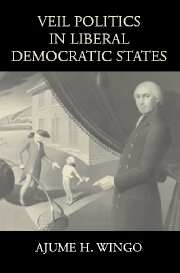1 - Introduction to Veil Politics
Published online by Cambridge University Press: 05 June 2012
Summary
POLITICAL VEILS
One of the great monuments found in Washington, DC, is the Lincoln Memorial. Inscribed on the south wall of the monument is the text of the Gettysburg Address, above which is a mural depicting the angel of truth freeing a slave. Engraved on the north wall is the text of Lincoln's Second Inaugural speech. In the middle of the pavilion is the figure of Abraham Lincoln himself, his grave countenance casting a palpable aura over visitors.
The power of artifacts like the Lincoln Memorial to stir the emotions is quite remarkable. But they are not alone in having this power: Novels, plays, films, and even manipulative television advertisements and greeting cards have the same ability to tap into the emotions of spectators. What – if anything – distinguishes civic monuments from artifacts like these? Are monuments of this kind merely public art of a particular kind, or do they serve another function that distinguishes them from other kinds of art?
One way to see what distinguishes civic monuments is to look at their effects. As we might expect, one of the effects of civic memorials is aesthetic. Just as an innovative artwork may please the eye or make us look with new eyes by jarring our sensibilities with new forms and unexpected lines, the Lincoln Memorial appeals to classical standards of proportion and symmetry, while the Vietnam Memorial is startling with its stark simplicity.
- Type
- Chapter
- Information
- Veil Politics in Liberal Democratic States , pp. 1 - 24Publisher: Cambridge University PressPrint publication year: 2003

